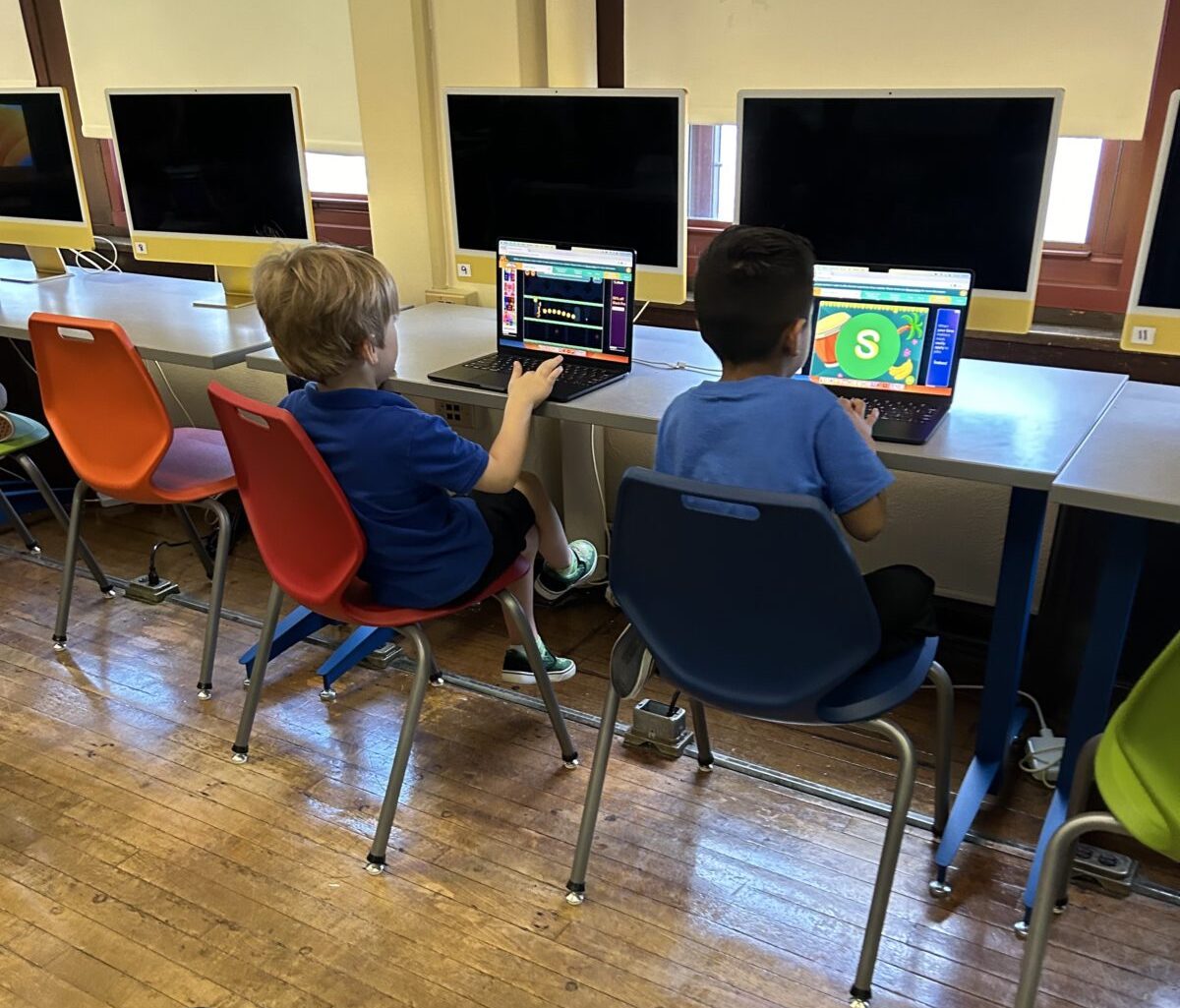This is Damian Furmanchin’s first year teaching digital literacy at Eliza B. Kirkbride School in South Philly to K-8 students. He’s currently working through the computing and society unit with his classes — fun, but important stuff like digital citizenship and internet safety. But he’s already eagerly anticipating for the next few lessons.
“I’m really looking forward to getting into the computer science fundamentals and coding. The kids are extremely excited about that,” he told Technical.ly. “I’m extremely excited because that’s a valuable skill for anybody to have, and for them, with our world as digital as it is, those 21st century computing skills are really necessary.”
Beyond having access to technology, true digital equity means that a person also knows how to use said technology, and understands where it fits in their world.
With this in mind, the School District of Philadelphia revamped its digital literacy curriculum this year for students in grades K-8 at 112 schools. The curriculum is aimed at teaching younger students the basics of computer science, how to use computers and how to evaluate information found on the internet.
Jessica Q. Ross-White, director of special projects in the district’s Office of Educational Technology, said the old curriculum had “good bones” and featured four sections: computing and society; computer science fundamentals and coding, including topics such as computational thinking and algorithms; media and information literacy, including research and evaluation and media bias; and digital tools and collaboration, including Word processing and design.
Yet there wasn’t a lot of guidance in that curriculum for teachers to use in planning their own lessons, she said. The new curriculum has more templates, lesson plans and links to updated resources, such as from Common Sense Media and Code.org. The program is set up so teachers can choose to pull from these sources or modify the lesson to fit their needs.
“If we want to make sure that digital literacy is being taught in these spaces, then we need to create such a platform and a framework that is going to be easy for the teachers to be able to use to then transfer those skills over to their students,” she said.
Furmanchin said the curriculum is user friendly for someone teaching the subject for the first time, like him. He noted that the curriculum is also accessible to students in English and Spanish, which is helpful for his school, which has a lot of Spanish-speaking students.
In the new curriculum, the digital tools and collaboration section is integrated into the other three, except in the plans for K-2. This move aims to ensure students have strong foundational computer skills before moving into more advanced digital literacy topics, such as coding. Teachers also have a guide explaining what goals students should be achieving at the end of each grade level.
Along with teaching students how to navigate the digital world, Ross-White said, this curriculum can show them that they can create technology and pursue a technology-related career, especially in the older grades.
Furmanchin said some of his eighth grade students have asked him about computer science classes in high school; the digital literacy classes piqued their interest.
“Overall our goal was to support this community of learners (teachers and students) in a way that there is no excuse not to teach the curriculum in the digital literacy spaces and abroad,” Ross-White told Technical.ly in a follow-up email. “We strived to provide a robust landscape where teachers can truly foster digitally literate citizens that create the tools they use in and out of the classroom every single day.”







